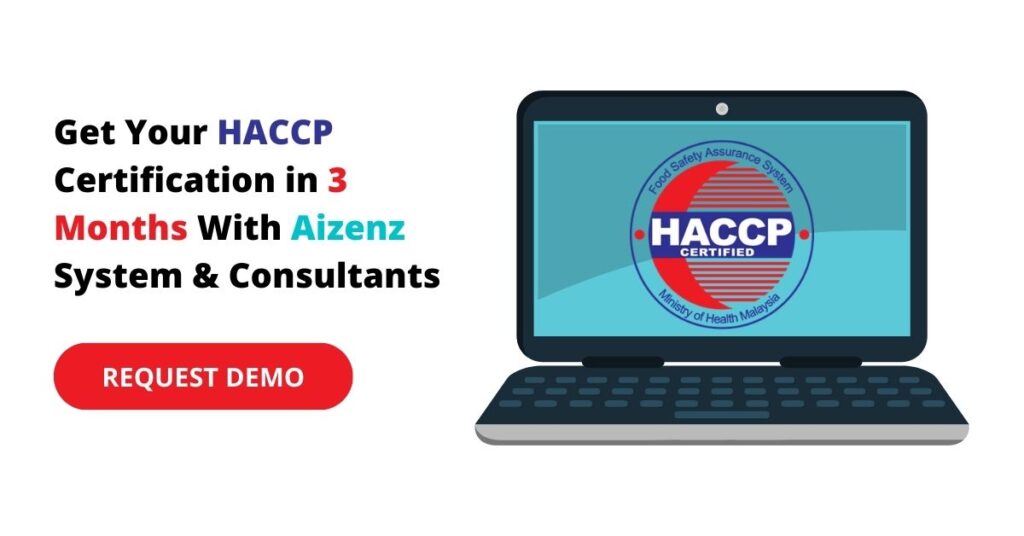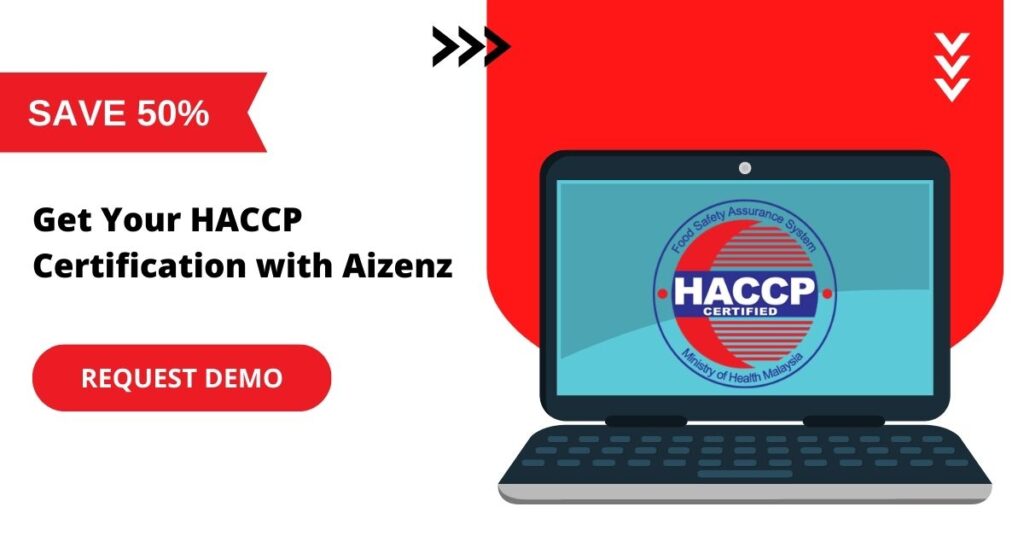Bubble Tea Malaysia and ISO 22000: Delivering Excellence Introduction ISO 22000 is a standard that will be applied by service providers who …
7 Principles and Guidelines of HACCP Certification You Must Know
Why do you need to understand the 7 principles and guidelines of HACCP certification in Malaysia? It is because they can help you control the food safety risks and prevent unnecessary costs that might affect your company’s reputation and finances.
What are the 7 principles and guidelines of HACCP Certification in Malaysia anyway? And what benefits can your business gain if you get certified? Keep reading to find out everything you need to know about this certification process.
7 principles and guidelines of HACCP certification Malaysia
HACCP stands for Hazard Analysis and Critical Control Points — a systematic preventive approach to identifying and controlling food safety risks. It is typically used to ensure the food supply chain safety, from farm to fork. In a nutshell, HACCP certification is important to safeguard the consumer against foodborne illnesses.
HACCP Certification in Malaysia is built based on 7 principles and guidelines. If you want to get certified, you must follow all the principles of this certification procedure.
The principles include:
- Conduct Food Safety Hazards Analysis
- Identify Critical Control Points
- Establish Critical Limits
- Develop Monitoring Procedures
- Take Corrective Actions
- Verify The Effectiveness of the HACCP System
- Establish Record Keeping Procedures
1. Conduct Food Safety Hazards Analysis
The first step in the HACCP certification process is to identify the potential hazards associated with the food you produce. Generally, the typical hazards that make food unsafe are physical, chemical, biological, and allergenic hazards.
These food hazards can lead to a product recall, damaging your company and product’s reputation. Therefore, you need to evaluate the hazards accurately. Besides, you also need to confirm that allergen information is included in your food labels to protect your customers.
2. Identify Critical Control Points
You must identify critical control points once you have identified and assessed the hazards. In other words, you must determine which steps in the process are essential to ensure food security. You also need to determine whether the process requires a control measure.
For each critical control point, you will need to identify the preventive measure. What will you do to prevent the food hazard? Will you implement a procedure? By using specific temperature, pH and time? These are points to control the hazard, or it will put consumers at risk.
3. Establish Critical Limits
Your next step is to establish criteria for each critical control point. You must define the requirements for each CCP to reduce the risk. For example, do you need to maintain a minimum temperature? Do you need to meet certain regulatory restrictions? Do you need to keep some other processing criteria at a specific level to control the hazard?
Let’s take this as an example. When you cook chicken chops, you must ensure that they reach a minimum temperature of 75°C to destroy the pathogens. If this limit is not under control, you must take corrective action immediately. It helps to control all affected products.
4. Develop Monitoring Procedures
Once you have identified the CCPs and critical limits, you must know how to monitor and document what is happening at each CCP. Then, you can ensure that the process is under control. Typically, you will monitor measuring parameters such as temperature and time.
But how you monitor and how frequent you do so will vary according to the size and nature of your food business. You need to make your monitoring way simple and clear. For instance, you may use a probe to ensure that refrigerated food is being stored below 5°C.
5. Take Corrective Actions
Once you have decided on the most effective ways to address the identified hazards, you must take corrective actions or have a backup plan. The corrective actions are to make sure that your product is safe to eat. You must also assess the process to find out what went wrong and eliminate the cause.
These actions come with two objectives. Firstly, you need to prevent any nonconforming food products. Secondly, you need to identify the cause, eliminate it, and prevent it from happening again.
6. Verify The Effectiveness of the HACCP System
Since you have put so much effort into food hazards prevention, the next step is to verify the HACCP system. It is critical to ensure that the system works effectively, and can prevent the identified food hazards. Therefore, you need to test the product and verify that the controls are working as planned.
You also need to review and correct the system periodically and whenever you make changes to your operation. For instance, when you replace a refrigerator, you need to verify the temperature settings in the new refrigerator to ensure that you achieve a safe storing temperature for raw meat.
7. Establish Record Keeping Procedures
Having records from the setup of the system and its process will help you meet legal requirements. Without providing evidence such as written records, it would be hard to prove that your food business complies with current legislation. Therefore, it is important to keep adequate records and documentation to implement the HACCP system successfully.
Unlock The Benefits of Getting Your Food Business Certified
HACCP certification is important because it helps your business meet the requirements of your customers in Malaysia and foreign markets. After all, this is the only way for you to prove that you are meeting quality and safety standards. But there are other reasons why you should get HACCP certification for your business.
It can also boost the reputation of your business. Customers trust businesses that have HACCP certification in Malaysia because they know these businesses are following quality and safety standards.
The HACCP system is also something that expands your market share. Since more businesses require their food suppliers to get HACCP certification, you will have more customers if you get this certification. It is especially important if you want to sell your food products to a large retail chain, like Aeon and Lotus.
Besides, the HACCP system will lower your business costs. Getting HACCP certification is not cheap, but it will save you a lot of money in the long run. You will have to spend less on product recalls, insurance, and regulatory fees.
Having a HACCP system in your food business will help protect employees, who are likely to suffer from fewer illnesses when the work environment is sanitary and safe. It will become your advantage to retain your employees with a good working environment.
Aizenz Makes Your HACCP Certification Process Simple
First of all, the HACCP certification process in Malaysia isn’t as complex as you think. In fact, we can make it simple, fast and affordable. Aizenz is an automated workflow system that helps businesses get ISO and HACCP certifications within three months at a competitive rate.
How we can do it, you ask? We provide a one-stop solution to you, from the documentation process to consultation and accreditation services. In short, you can get everything in one place without hassles.
What Aizenz can do to help your business get the HACCP certification process in Malaysia?
- We have a digital platform with easy-to-use features and ready-made templates. It can help you simplify the documentation and record-keeping process. As a result, you can save time, manpower, paper, effort and cost.
- Our consultation partners will provide ISO training and advice to you. They will help you go through the rigorous process of HACCP certification in Malaysia and make sure you can fulfil the 7 principles and guidelines.
- We work with the Independent Certification Bodies that are accredited by the Department of Standard Malaysia (DSM) which is the accreditation body to certify HACCP.
Click the link below to find out more details about why you need ISO certification in Malaysia:
More resources
Quality in Motion: ISO 9001 Certification for Transportation Services Introduction Transportation services is a business that involves activities of transferring people, goods, …
Enhancing Safety in Petroleum Engineering With ISO 45001 Introduction Petroleum engineering is the job constantly exploring, extracting, and producing oil and gas …



